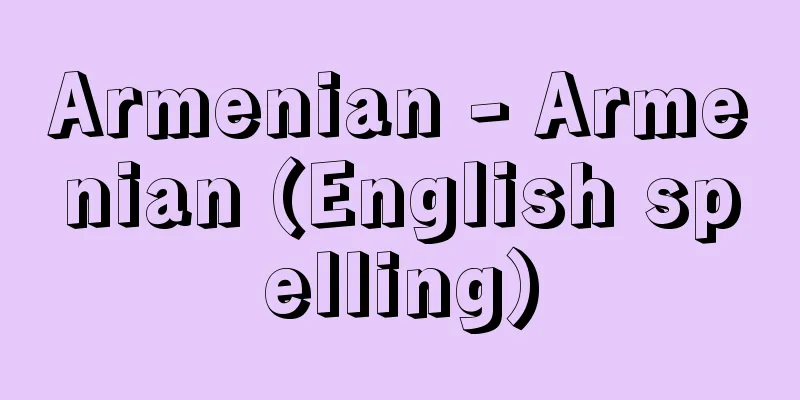Merit rating

|
Performance appraisal, or the evaluation of work performance, generally refers to the evaluation of the working status of employees in a company or business establishment using various methods. The purpose is to rationalize or scientificate personnel management of employees. In Japan, it was called personnel appraisal before World War II, but the evaluation method (content) often lacked objectivity. It was after the war that performance appraisal became an important means of personnel management, and methods were developed to be more sophisticated and it became widely used. Regarding performance evaluations of civil servants, Article 72 of the National Public Service Act (promulgated October 21, 1947) and Article 40 of the Local Public Service Act (promulgated December 13, 1950) stipulated relatively early on after the Second World War that the appointing authority (the head of the competent authority) must periodically evaluate the performance of employees and take measures according to the results of the evaluation. Additionally, Article 12 of the Special Act on Educational Public Servants (promulgated January 12, 1949) also stipulated that "the evaluation of the performance of the president, faculty members and department heads and the measures according to the results of the evaluation shall be carried out by the university administrative body." (The current provision, amended in 1999, changes the part "carried out by the university administrative body" to "in the case of the president, by the council; in the case of faculty members and department heads, by the president based on a faculty meeting; and in the case of department heads other than deans, by the president.") However, performance appraisals of teachers in public elementary and junior high schools were difficult to implement due to deep-rooted opposition from within the educational field. However, in 1956, the Ehime Prefectural Board of Education implemented them, and gradually the number of prefectures implementing them increased. In June 1956, the "Law Concerning the Organization and Management of Local Educational Administration" (promulgated June 30th), which replaced the Board of Education Law, stipulated in Article 46 that performance evaluations of teachers at municipal elementary and junior high schools, etc., who are paid for by the prefecture, "shall be conducted by municipal committees under the plan of the prefectural committee." In November of the same year, the Ehime Prefectural Board of Education decided to postpone regular salary increases for some teachers in order to alleviate the worsening prefectural finances at the time, and revealed that performance evaluations would be implemented in the documents. Since then, despite fierce opposition from prefectural teachers' unions and the Japan Teachers' Union (anti-performance evaluation struggle, 1957-59), the number of prefectures implementing performance evaluations has gradually increased, and it is now established nationwide. The current performance appraisal format for public schools is based on the draft performance appraisal agreed upon by the National Conference of Prefectural Superintendents of Education in December 1957, with some modifications made to suit the circumstances of each local government. In the case of prefectural schools, the evaluator for principals is the prefectural superintendent of education, and the evaluator for other teaching staff is the principal of each school (coordinating with the superintendent of education). In the case of municipal schools, the evaluator for principals is the municipal superintendent of education, and the evaluator for other teaching staff is the principal of each school (coordinating with the superintendent of education). Performance appraisals are conducted with detailed standards and content set out in the Board of Education rules and implementation guidelines. Half a century has passed since the implementation of performance appraisals, and during this time, several cases have arisen over the merits of their implementation, which have been contested as "performance appraisal trials." Due to these circumstances, although performance appraisals have become established in a formal sense, there is resentment that they have not contributed sufficiently to the realization of fair and scientific personnel management of teachers and administrative staff. In order to improve this, it will be necessary to devise ways to make the appraisal items more objective, and to further consider what content is appropriate to increase teachers' motivation to work and promote their professional development. In this regard, the performance appraisal system introduced by the Tokyo Metropolitan Board of Education in 1999 is a noteworthy example of a new attempt to explore the future form of performance appraisals in Japan. The system was decided at the Tokyo Metropolitan Board of Education meeting held on December 16, 1999 (effective April 1, 2000). The official title is "Rules for the Personnel Appraisal of Educational Personnel of Tokyo Metropolitan Schools" and "Rules for the Personnel Appraisal of Educational Personnel of Tokyo Wards, Municipalities, and Local Governments." This attempt at personnel evaluation, which abolishes the previous "Rules for Evaluating the Performance of Educational Personnel at Tokyo Metropolitan Schools and Ward Schools" and "Rules for Evaluating the Performance of Educational Personnel at Tokyo Metropolitan Schools and Municipal Schools," and is carried out from a new perspective and with new content, differs from the old rules in the following five ways. (1) Self-reporting by the educational personnel in question has been introduced. (2) The evaluation period was set on an annual basis. (3) Evaluation will be conducted using both absolute and relative evaluation. Absolute evaluation will be conducted to find out the guidance and training methods for educational personnel, and relative evaluation will be conducted to reflect the evaluation results in the salaries and promotions of educational personnel. (4) Regarding absolute evaluation, the vice principal was the primary evaluator and the principal was the secondary evaluator. (5) The principal or vice principal may seek the opinion of the head teacher when conducting absolute evaluation. [Yaichi Wakai] "A Talk on Personnel Evaluations" by Yazaki Mitsumi (1982, Nichigetsu Publishing)" ▽ "Performance Evaluations" by Wakai Yaichi (included in "Outline of Educational Administration and Systems" 1978, Kinkodo Publishing)" ▽ "Twenty Years of the Performance Evaluation Struggle" by Ito Yoshiharu (1977, Otowa Shobo)" ▽ "The Abilities and Evaluations Required of Teachers" edited by Sato Zen and Sakamoto Takanori (1996, Toyokan Publishing) [References] | | | | | |Source: Shogakukan Encyclopedia Nipponica About Encyclopedia Nipponica Information | Legend |
|
勤務評定、すなわち勤務成績の評定とは、一般的には会社や事業所において、所属職員の勤務状態をいろいろな方法で評定することをいう。その目的は、職員の人事管理の合理化または科学化にある。わが国では第二次世界大戦前は人事考課とよばれていたが、評定方法(内容)が客観性を欠くことが少なくなかった。勤務評定が人事管理の重要な手段として、方法にくふうが凝らされ、広範に普及するようになったのは戦後のことである。 公務員の勤務評定については、第二次世界大戦後、比較的早い時期に、国家公務員法(1947年10月21日公布)第72条および地方公務員法(1950年12月13日公布)第40条で、職員の執務について、任命権者(所轄庁の長)は定期的に勤務成績の評定を行い、その評定の結果に応じた措置を講じなければならない旨の規定がなされ、また、教育公務員特例法(1949年1月12日公布)においても、その第12条で、大学の「学長、教員及び部局長の勤務成績の評定及び評定の結果に応じた措置は、大学管理機関が行う」ことが明記された(1999年改正の現行規定は、「大学管理機関が行う」の部分が、「学長にあっては評議会、教員及び部局長にあっては教授会会議に基づき学長、学部長以外の部局長にあっては学長が行う」と改められている)。しかし、公立小・中学校等の教員の勤務評定については、教育現場に根強い反発があったことも原因してなかなか実施できなかったが、1956年(昭和31)に至り愛媛県教育委員会が実施したのを皮切りに、徐々にではあるが実施する県が増加していった。 1956年6月、教育委員会法にかわって制定された「地方教育行政の組織及び運営に関する法律」(6月30日公布)では、その第46条で県費負担教職員である市町村立の小・中学校等の教職員の勤務評定について、「都道府県委員会の計画の下に、市町村委員会が行うものとする」ことを規定した。同年11月、愛媛県教育委員会は、当時の県財政の悪化を解消するために、一部の教職員の定期昇給を延伸することとし、その資料に勤務評定を実施することを明らかにした。以後、各都道府県教職員組合、日本教職員組合等の猛烈な反対運動(勤評反対闘争、1957~59)にもかかわらず、勤務評定の実施県が徐々に増加し、現在では全国的に定着している。 現在行われている勤務評定の様式は、公立学校の場合、1957年12月に全国都道府県教育長協議会が申し合わせた勤務評定試案を基本型として、各地方公共団体の実情に照らして修正を加えたものによっている。県立学校の場合、校長に対する評定者は県教育長、校長以外の教職員に対する評定者は各学校の校長(調整者は教育長)である。市町村立学校の場合、校長に対する評定者は市町村教育長であり、校長以外の教職員に対する評定者は各学校の校長(調整者は教育長)である。勤務評定は、教育委員会規則や実施要領等により、詳細な基準と内容をもって行われている。 勤務評定は実施以来、半世紀を経過したが、この間、実施の是非をめぐり、いくつかの事件が発生し、「勤評裁判」として争われてきた。こうした事情もあって、勤務評定は形式的には定着しているものの、教職員の公正かつ科学的な人事管理の実現に十分寄与しえていないうらみがある。この点を改善するためには、評定項目をより客観的なものにするくふうを行うとともに、教職員の勤務意欲を高め、さらに職能発達を促すようなものにするにはどういう内容がふさわしいのか、さらに検討を重ねていくことが今後の課題であろう。この点で、1999年(平成11)に東京都教育委員会が打ち出した勤務評定制度は、今後わが国の勤務評定のあり方を模索する新たな試みとして注目すべき事例である。同制度は、1999年12月16日開催の東京都教育委員会において決定された(2000年4月1日施行)。正式名称は「東京都立学校教育職員の人事考課に関する規則」および「東京都区市町村立学校教育職員の人事考課に関する規則」である。これまでの「東京都立学校及び区立学校教育職員等の勤務成績の評定に関する規則」および「東京都市町村立学校教育職員等の勤務成績の評定に関する規則」を廃止し、新たな視点と内容の下で行われるこの人事考課の試みは、旧規則との対比でみると、次の五つの点で異なっている。 (1)対象となる教育職員本人の自己申告を導入したこと。 (2)評価期間を、年度単位に設定したこと。 (3)評価は、絶対評価と相対評価を併用することとしたこと。絶対評価は、教育職員の指導育成方策をみいだすために行い、相対評価は、評価結果を教育職員の給与や昇任等に反映させるために行う。 (4)絶対評価については、教頭を第一次評価者に位置づけ校長を第二次評価者としたこと。 (5)校長または教頭は、絶対評価を行うにあたって、主任から参考意見を求めることができるとしたこと。 [若井彌一] 『矢崎光美著『人事考課のはなし』(1982・日月出版)』▽『若井彌一著『勤務評定』(『要説教育行政・制度』所収・1978・金港堂出版)』▽『伊藤吉春著『勤評闘争二十年』(1977・音羽書房)』▽『佐藤全・坂本孝徳編『教員に求められる力量と評価』(1996・東洋館出版社)』 [参照項目] | | | | | |出典 小学館 日本大百科全書(ニッポニカ)日本大百科全書(ニッポニカ)について 情報 | 凡例 |
>>: Workplace allowance - Kinmuchi teate
Recommend
Pyrrophyta
…They grow in both marine and inland waters, and ...
Iga clan
A powerful clan in the eastern provinces of the M...
Sekibune
〘Noun〙 The name for a type of military ship used f...
Complete metamorphosis
A type of metamorphosis in insects, in which a lar...
Staircase writing - kaidanmon
...The name was probably derived from the fact th...
Buoy - Buoy (English spelling)
Also called a buoy. A structure that is tethered ...
Big song - Oota
A general term for songs used at official Imperia...
Acer crataegifolium (English spelling) Acercrataegifolium
… [Ken Ogata]. . … *Some of the terminology that ...
Bell - Ensho
...As a result, the tunes are generally called ri...
Kakkoyashikigami - Each household god
...The diversity of names for yashikigami indicat...
Eastern Style Two-stringed Instrument - Azuma Ryunigenkin
A type of Japanese music and its instrument. It is...
Wig - Wig
This is a method of using a net made of artificial...
Basilicata (English spelling)
A region in southern Italy. It has an area of 9,...
Cao Ruolin
A pro-Japanese Chinese bureaucrat from Shanghai. ...
Presenting
...A similar custom is the buttocks-smacking fest...









